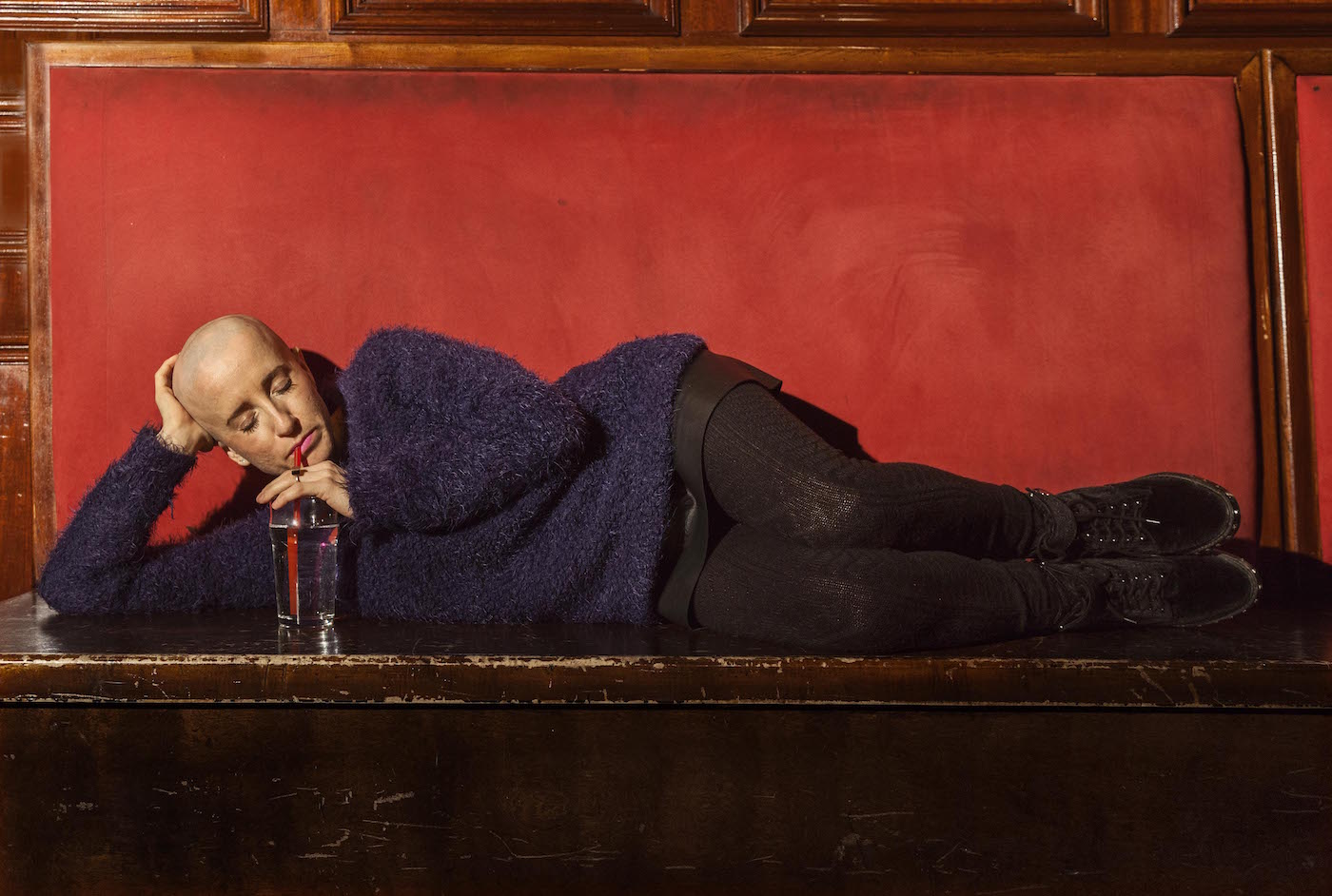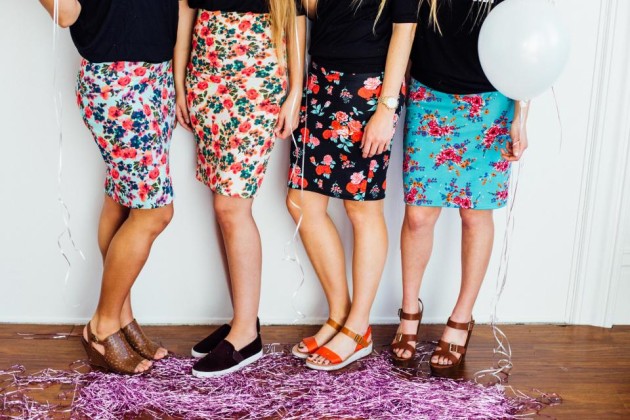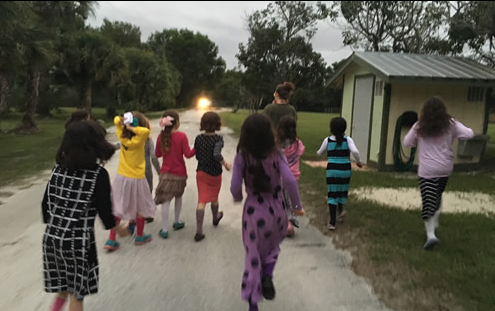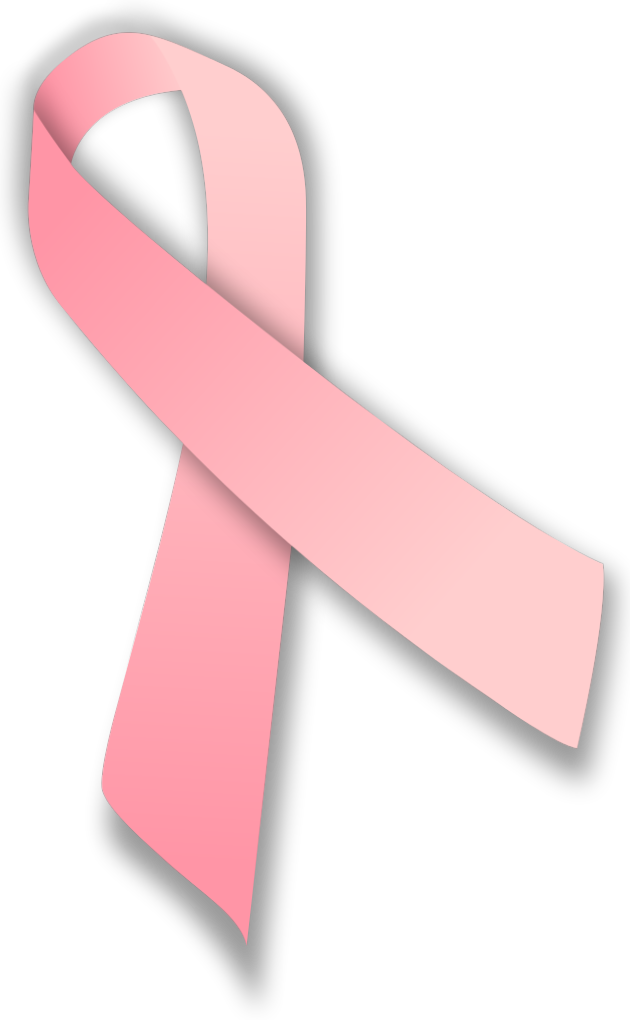Author Archives: Rebecca Halff
April 18, 2018 by Rebecca Halff
There Are No Queer Chassidic Jews; Or, Why Shterna Goldbloom Is Photographing Them
 “I want to show that there are so many ways to be a person,” says artist Shterna Goldbloom about her photography, which centers queer Jewish identities and challenges notions of what it means to be either and both. Goldbloom’s photographs, many of them self-portraits, as in her series Sitra Achra (“other side”), explore Jewish queerness with a double consciousness that reveals her history. Raised in Chicago’s Hasidic community, Goldbloom left that world at age sixteen, after her parents divorced and her mother came out as queer. “I was such a good student, everybody thought I would marry a rabbi. And I thought that too,” says Goldbloom about life before her family’s ostracization by their close-knit community.
“I want to show that there are so many ways to be a person,” says artist Shterna Goldbloom about her photography, which centers queer Jewish identities and challenges notions of what it means to be either and both. Goldbloom’s photographs, many of them self-portraits, as in her series Sitra Achra (“other side”), explore Jewish queerness with a double consciousness that reveals her history. Raised in Chicago’s Hasidic community, Goldbloom left that world at age sixteen, after her parents divorced and her mother came out as queer. “I was such a good student, everybody thought I would marry a rabbi. And I thought that too,” says Goldbloom about life before her family’s ostracization by their close-knit community.
Now, as a queer-identified Jewish woman who lives outside the bounds of the ultra-Orthodox world, Goldbloom makes intensely personal art that asks the age-old Jewish question: How do we exist in exile? Disconnected from the community through which we learned ritual, tradition, and meaning, how do we experience spirituality and connectedness? When one’s identity implies the rejection of certain aspects of Orthodox life, how can we keep what speaks to us, even if those pieces do not seamlessly fit into our new lives? How can queer Jews do Judaism without throwing away the entire rule book?
- 3 Comments
June 29, 2016 by Rebecca Halff
Policing Girls’ Bodies Part Two: Legs
 I wouldn’t mind reclaiming my high school nickname: Legs. It’s kind of cute. “Hey Legs!” my favorite school administrator would shout when she saw me roaming the halls, having absconded from class. I would look down at my knees feeling all the traits implied by that sassy little nickname: daring, provocative, cute, outrageous. I would grin at her and pull down my skirt a couple inches, as if to say, “Thanks for the heads up.” At Ramaz, the modern Orthodox day school I attended, my knees were absolutely unwelcome. She was saving me from a potential “tzniut (modesty) violation” by a serious dress code enforcer down the hall.
I wouldn’t mind reclaiming my high school nickname: Legs. It’s kind of cute. “Hey Legs!” my favorite school administrator would shout when she saw me roaming the halls, having absconded from class. I would look down at my knees feeling all the traits implied by that sassy little nickname: daring, provocative, cute, outrageous. I would grin at her and pull down my skirt a couple inches, as if to say, “Thanks for the heads up.” At Ramaz, the modern Orthodox day school I attended, my knees were absolutely unwelcome. She was saving me from a potential “tzniut (modesty) violation” by a serious dress code enforcer down the hall.
After davening every morning, one rabbi or another would deliver our morning announcements, which on a typical day went something like this: “There’s cereal in the lunchroom for those who want breakfast. There’s a winter clothing drive going on, so bring coats and scarves to the office. And…girls! Because of recent complaints about dress code, we feel the need to restate the requirements for sleeve and skirt length. The test for shirts is as follows: when you raise your arms above your head, your shirt should not rise to expose your midriff. As for skirts—how many times do we need to say this?!—your skirts should not be above-the-knee, nor should they be to-the-knee. They should cover your knees! If your skirt does not cover your knees, you will be sent to the office.” More than once (hence the nickname), I had been sent to the office, where a huge, shapeless, black garbage bag of a skirt awaited girls convicted of dress code violations.
- No Comments
May 26, 2016 by Rebecca Halff
Why This Abortion Rights Tactic Is Actually Sexist
 Take a minute and Google “abortion stories.” See that? They’re everywhere. You can read 173 of them on NARAL Pro-Choice America’s website alone. “Sharing your story is a powerful way to speak out for choice,” NARAL tells women. “It can inspire another person to speak out, and it could even help pass a pro-choice bill.” This is typical of how the sharing of abortion “stories” is usually framed: as a pro-choice, pro-reproductive rights political action. Sometimes, these testimonies do serve an explicitly political purpose—as when, in February of this year, women told the Supreme Court about their abortions in an effort to convince the court to protect women’s reproductive rights. Other times, the mission of those sharing their stories is less specific, albeit just as politically and culturally important: women are aiming to achieve the destigmatization and normalization of abortion, a shift in cultural attitudes that has the potential to change policy and lives. Our Bodies, Ourselves views the sharing of abortion stories as a caring act in the spirit of women’s solidarity. “Hearing women’s stories of having an abortion can help us know what to expect and reassure us that our experiences are not unique,” OBOS’s website explains.
Take a minute and Google “abortion stories.” See that? They’re everywhere. You can read 173 of them on NARAL Pro-Choice America’s website alone. “Sharing your story is a powerful way to speak out for choice,” NARAL tells women. “It can inspire another person to speak out, and it could even help pass a pro-choice bill.” This is typical of how the sharing of abortion “stories” is usually framed: as a pro-choice, pro-reproductive rights political action. Sometimes, these testimonies do serve an explicitly political purpose—as when, in February of this year, women told the Supreme Court about their abortions in an effort to convince the court to protect women’s reproductive rights. Other times, the mission of those sharing their stories is less specific, albeit just as politically and culturally important: women are aiming to achieve the destigmatization and normalization of abortion, a shift in cultural attitudes that has the potential to change policy and lives. Our Bodies, Ourselves views the sharing of abortion stories as a caring act in the spirit of women’s solidarity. “Hearing women’s stories of having an abortion can help us know what to expect and reassure us that our experiences are not unique,” OBOS’s website explains.
Women who want to share their abortion experiences with the world—for whatever reason at all—should be able to do so without fear of being shamed and stigmatized. But please, media outlets. Stop asking for my abortion story. My medical history and reproductive health are none of your business.
All over the Internet, abortion stories are being coaxed out of—and sometimes demanded from—women. The 1 in 3 Campaign (referring to the one in three U.S. women who will have an abortion in her lifetime, according to the Guttmacher Institute) takes one of the more appropriate approaches to asking for such personal and private information by suggesting rather than demanding that women participate in the project. “The [campaign] is a grassroots movement to start a new conversation about abortion—telling our stories, on our own terms,” the website explains. Other campaigns, like #ShoutYourAbortion, are neither as diplomatic nor as respectful of a women’s right to choose—in this case, our right to choose not to share our medical history with the general public. Their verb of choice is actually in the imperative.
- 1 Comment
April 4, 2016 by Rebecca Halff
I’m Denominationally Conflicted. Are You?

I’ve been “denominationally conflicted” for a while now—and I suspect I’m not the only one whose intellect doesn’t match her emotions when it comes to Judaism. While I believe fiercely in egalitarianism (although I did not have a bat mitzvah, I loved reading from the Torah for three of my siblings’ bar and bat mitzvahs), my heart doesn’t soar in the Conservative shul to which my family belongs to the way it does in ultra-Orthodox settings.
My attempts at understanding the disconnect between what I believe and what I feel have yielded only vague hypotheses. Sometimes I think it’s the women-only spaces created by gender-segregated services which appeal to me. Maybe it’s something evoked by the accents, the intonation, the melodies, the mannerisms, the motions. It could also be the cozy, communal feeling of being outsiders together which comes with a recognizable dress code and a set of habits and traditions often viewed by gentiles and secular Jews as mysterious and unsettling.
As a kid, I spent my summers at a girls-only Lubavitch sleepaway camp in the Pyrenees Mountains in France. Whereas at home I adhered to no dress code whatsoever, in camp we all wore opaque wool tights, ankle-length skirts, long-sleeved shirts that covered our collarbones, and close-toed shoes. Buttons and zippers were frowned upon. “When a door is open, you want to peek inside,” instructed one of our counselors, “So too buttons make men want to peek inside.” I was nine years old, but I recognized immediately that this was a creepy thing to say, and filed it under the category of “things to report to my parents when I get home.” (However ridiculous I considered the counselor’s ideas, however, it does not escape me that I’ve remembered her exact words for all these years—clearly they made an impact.)
- 2 Comments
Link Roundups, The Lilith Blog
October 23, 2014 by Rebecca Halff
Beyond Pinktober
 The world (or in other words, journalists and the blogosphere) is officially disenchanted with Pinktober.
The world (or in other words, journalists and the blogosphere) is officially disenchanted with Pinktober.- No Comments
October 8, 2014 by Rebecca Halff
What We’ve Been Reading
 The U.S. Supreme Court decided Monday not to hear appeals that favor upholding bans on same-sex marriage:
The U.S. Supreme Court decided Monday not to hear appeals that favor upholding bans on same-sex marriage:
A state-by-state breakdown of what the decision really means. [The Guardian]
“Tax Advice for Newlyweds,” from Curve magazine. Curve asks, “What does the Supreme Court same-sex marriage appeal denial mean for same-sex couple tax filers?” and details some of the ways in which same-sex couples are discriminated against in the tax-filing process.
California now requires universities receiving state funding to use an “’affirmative consent standard’ for determining whether consent was given by both parties to sexual activity. This move represents a paradigm shift away from women as victims and potential victims encouraged to shout “no” a bit louder to women as agents who have the positive right to engage or refrain from engaging in sexual relations.” [Our Bodies, Ourselves Blog]
A North Dakota High School bans yoga pants, leggings, and skinny jeans because they “pose a threat” to male students, effectively teaching their female students body-shame, and their male students that “their inability to respect others is acceptable.” Oh, and the school’s principal compared his female students to sex workers, too. [Salon]
- No Comments
 Please wait...
Please wait...